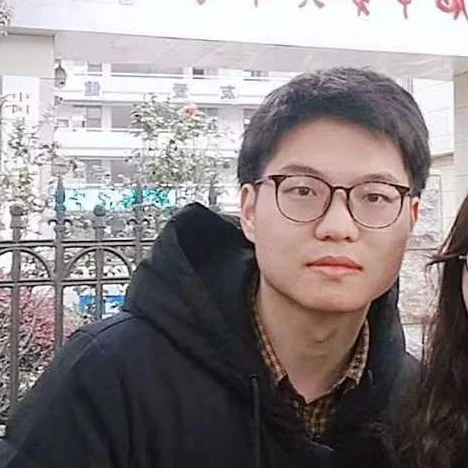





TopMost provides complete lifecycles of topic modeling, including datasets, preprocessing, models, training, and evaluations. It covers the most popular topic modeling scenarios, like basic, dynamic, hierarchical, and cross-lingual topic modeling.
@inproceedings{wu2023topmost,
title = "Towards the {T}op{M}ost: A Topic Modeling System Toolkit",
author = "Wu, Xiaobao and Pan, Fengjun and Luu, Anh Tuan",
editor = "Cao, Yixin and Feng, Yang and Xiong, Deyi",
booktitle = "Proceedings of the 62nd Annual Meeting of the Association for Computational Linguistics (Volume 3: System Demonstrations)",
month = aug,
year = "2024",
address = "Bangkok, Thailand",
publisher = "Association for Computational Linguistics",
url = "https://aclanthology.org/2024.acl-demos.4",
pages = "31--41"
}
@article{wu2023survey,
title={A Survey on Neural Topic Models: Methods, Applications, and Challenges},
author={Wu, Xiaobao and Nguyen, Thong and Luu, Anh Tuan},
journal={Artificial Intelligence Review},
url={https://doi.org/10.1007/s10462-023-10661-7},
year={2024},
publisher={Springer}
}
Table of Contents
TopMost offers the following topic modeling scenarios with models, evaluation metrics, and datasets:
| Scenario | Model | Evaluation Metric | Datasets |
|---|---|---|---|
Basic Topic Modeling
|
TC
TD
Clustering
Classification
|
20NG
IMDB
NeurIPS
ACL
NYT
Wikitext-103
|
|
Hierarchical
Topic Modeling
|
TC over levels
TD over levels
Clustering over levels
Classification over levels
|
20NG
IMDB
NeurIPS
ACL
NYT
Wikitext-103
|
|
Dynamic
Topic Modeling
|
TC over time slices
TD over time slices
Clustering
Classification
|
NeurIPS
ACL
NYT
|
|
Cross-lingual
Topic Modeling
|
TC (CNPMI)
TD over languages
Classification (Intra and Cross-lingual)
|
ECNews
Amazon
Review Rakuten
|
Install topmost with pip as
$ pip install topmostWe try FASTopic to get the top words of discovered topics, topic_top_words and the topic distributions of documents, doc_topic_dist.
The preprocessing steps are configurable. See our documentations.
import topmost
from topmost.data import RawDataset
from topmost.preprocessing import Preprocessing
from sklearn.datasets import fetch_20newsgroups
docs = fetch_20newsgroups(subset='all', remove=('headers', 'footers', 'quotes'))['data']
preprocessing = Preprocessing(vocab_size=10000, stopwords='English')
device = 'cuda' # or 'cpu'
dataset = RawDataset(docs, preprocessing, device=device)
trainer = topmost.trainers.FASTopicTrainer(dataset, verbose=True)
top_words, doc_topic_dist = trainer.train()
new_docs = [
"This is a document about space, including words like space, satellite, launch, orbit.",
"This is a document about Microsoft Windows, including words like windows, files, dos."
]
new_theta = trainer.test(new_docs)
print(new_theta.argmax(1))import topmost
from topmost.data import download_dataset
download_dataset('20NG', cache_path='./datasets')device = "cuda" # or "cpu"
# load a preprocessed dataset
dataset = topmost.data.BasicDataset("./datasets/20NG", device=device, read_labels=True)
# create a model
model = topmost.models.ProdLDA(dataset.vocab_size)
model = model.to(device)
# create a trainer
trainer = topmost.trainers.BasicTrainer(model, dataset)
# train the model
top_words, train_theta = trainer.train()# evaluate topic diversity
TD = topmost.evaluations.compute_topic_diversity(top_words)
# get doc-topic distributions of testing samples
test_theta = trainer.test(dataset.test_data)
# evaluate clustering
clustering_results = topmost.evaluations.evaluate_clustering(test_theta, dataset.test_labels)
# evaluate classification
classification_results = topmost.evaluations.evaluate_classification(train_theta, test_theta, dataset.train_labels, dataset.test_labels)import torch
from topmost.preprocessing import Preprocessing
new_docs = [
"This is a new document about space, including words like space, satellite, launch, orbit.",
"This is a new document about Microsoft Windows, including words like windows, files, dos."
]
preprocessing = Preprocessing()
new_parsed_docs, new_bow = preprocessing.parse(new_docs, vocab=dataset.vocab)
new_theta = trainer.test(torch.as_tensor(new_bow, device=device).float())To install TopMost, run this command in the terminal:
$ pip install topmostThis is the preferred method to install TopMost, as it will always install the most recent stable release.
The sources for TopMost can be downloaded from the Github repository.
$ pip install git+https://github.com/bobxwu/TopMost.gitWe provide tutorials for different usages:
This library includes some datasets for demonstration. If you are a dataset owner who wants to exclude your dataset from this library, please contact Xiaobao Wu.
 Xiaobao Wu
Xiaobao Wu |
- Icon by Flat-icons-com.
- If you want to add any models to this package, we welcome your pull requests.
- If you encounter any problem, please either directly contact Xiaobao Wu or leave an issue in the GitHub repo.

